Bluetooth speaker features beyond just wireless connectivity include sound quality, battery life, portability, waterproofing, and advanced connectivity (like USB/aux ports). These extra features matter because they directly affect the speaker’s real-world performance. For example, a speaker with crisp drivers and a subwoofer delivers richer audio, while one with a long-lasting battery and an IP67 rating can handle outdoor use and poolside partieselectrotecaudio.com jabra.com. In short, look for robust sound performance, durable build, and smart connectivity options when choosing a Bluetooth speaker – these features ensure a better listening experience and value electrotecaudio.com jabra.com.
Table of Contents
- Sound Quality and Audio Performance
- Battery Life and Portability
- Connectivity and Compatibility
- Durability: Waterproofing and Ruggedness
- Convenience and Extra Features
- Smart Features and Integration
- Choosing the Right Bluetooth Speaker Features
- FAQ
Sound Quality and Audio Performance
Good audio output is the most crucial Bluetooth speaker feature. If a speaker doesn’t deliver solid sound, other perks won’t matter muchelectrotecaudio.com. Look for multiple drivers and broad frequency response: two-way speakers with separate woofers and tweeters tend to produce clearer bass and detailed highs. Check specs like frequency range, total harmonic distortion (THD), or any mention of built-in subwoofers. For example, speakers with larger subwoofers or bass radiators will handle low notes better. Also consider features like an equalizer or custom sound modes (often via an app) to fine-tune audio to your taste.
- Stereo Sound / Pairing: Some speakers support pairing two units for true stereo or multi-room setups. This feature can dramatically improve immersion for movies or music.
- High-Resolution Codecs: Premium models may support aptX or LDAC codecs that allow higher-quality wireless audio than standard Bluetooth. (If your phone also supports aptX, a speaker with aptX HD will give you noticeably better sound whathifi.com.)
- Real-world example: The JBL Charge series offers deep bass and clear mids, which is why it’s favored for outdoor parties. By contrast, a simple mono speaker under-delivers on sound richness, even if it has extra lights or color options.
In summary, prioritize sound clarity and power in your Bluetooth speaker features. As Electrotec Audio puts it, “If a speaker doesn’t deliver solid sound output, the rest of the criteria don’t matter much.”electrotecaudio.com
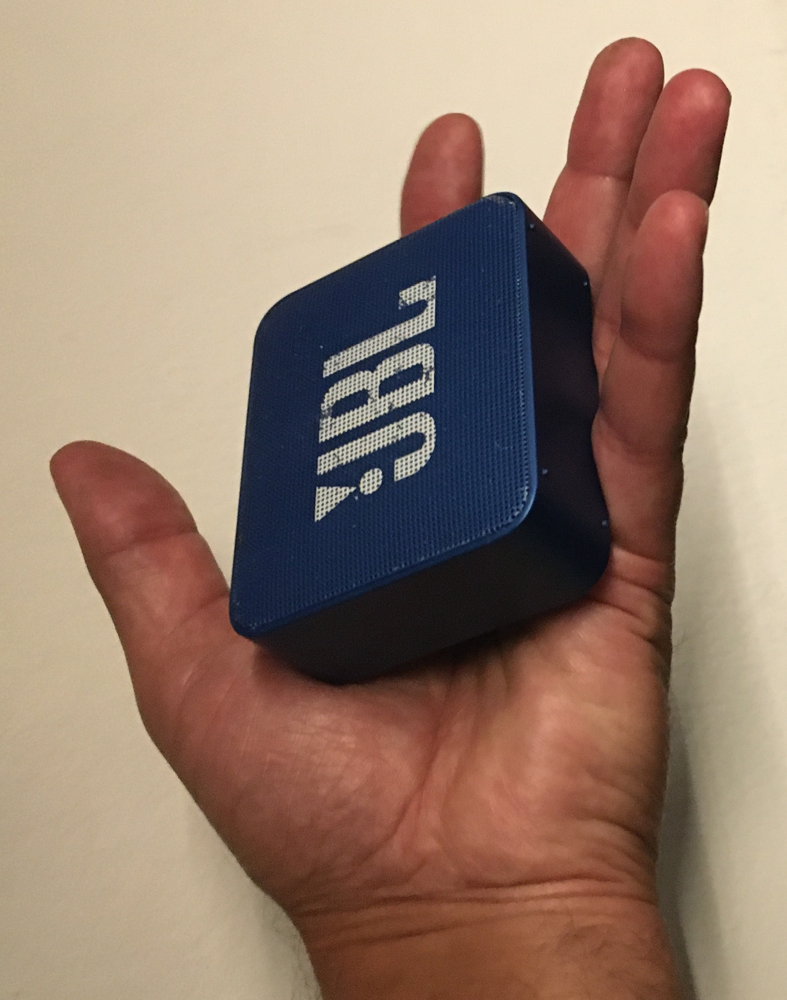
Battery Life and Portability
For portable use, battery life is a key feature. A speaker with great sound is no good if it runs out of power too soon. Today’s speakers typically offer 6–12 hours of playtimewhathifi.com, but many high-end ones boast 15–20 hours or more on a full charge. We recommend at least 10–12 hours for flexible use outdoors or parties. For instance, Electrotec warns you could be “enjoying the ‘Sound of Silence’” if the battery is insufficientelectrotecaudio.com. Make sure to check the mAh rating (bigger battery, longer life) and note how long it takes to recharge. Fast-charging via USB-C is a plus, allowing a quick top-up before heading out.
Packability is the next concern. Heavy, bulky speakers might deliver huge sound but aren’t easy to carry. Look for dimensions and weight if you’ll backpack it. Some speakers include handles, carabiners, or straps for easy carrying or attaching to bags. Ultra-compact models (like the JBL Go series) can fit in a jacket pocket, though they trade off some battery and low-end punch. On the other hand, full-sized speakers (with longer battery life) are suited for backyard or indoor use. A good portable speaker strikes a balance: it’s light enough to carry yet houses a decent battery.
- Power Bank Feature: Some speakers include a USB-out port to charge your phone or gadgets from their battery. This can be handy on trips.
- USB-C Charging: Newer models use USB-C for faster charging. As What Hi-Fi? notes, USB-C means less charging time and no “wrong way” plug orientation whathifi.com.
- Real-life tip: If you plan picnics or hikes, pick a speaker with 10+ hours and enough volume. For beach or pool, an IPX7 waterproof model (discussed next) with at least half-day playtime is ideal.

Connectivity and Compatibility
Extra connectivity options make a Bluetooth speaker more versatile. Bluetooth version and pairing capabilities matter. Most new speakers use Bluetooth 5.0 or higher, which offers up to 120 meters of range — four times the range of older 4.x versionswhathifi.com. This means you can roam farther from the source device without dropouts. Also ensure your speaker supports multi-pairing if you need it (e.g. connect two phones) or dual-speaker stereo mode for larger sound.
Besides wireless, check for wired inputs: A 3.5mm AUX jack or USB audio can connect devices without Bluetooth. Some models also have microSD or USB flash slots to play music files directly. On the charging side, as noted, a USB-C input is preferable over outdated Micro-USBwhathifi.com. This not only charges faster but is more durable.
- Audio Codecs: Look for support of higher-quality codecs (like aptX, AAC, LDAC) if you stream high-res music. aptX HD, for example, delivers near-CD quality audiowhathifi.com.
- NFC Pairing: A few speakers allow one-tap NFC pairing for quick setup, which can be handy with Android phones.
- Wireless Stereo Linking: If you need more sound, some Bluetooth speakers can wirelessly link two units in stereo mode. (Check if your speaker’s app or manual supports this.)
In short, ensure your speaker’s connectivity features match your devices and use case. Strong, stable connections prevent skips or dropoutselectrotecaudio.com, and extra ports mean you can use the speaker even without Bluetooth. For example, many outdoor speakers include an AUX input and a USB port for phones, so you can charge your phone and play music simultaneouslywhathifi.com.
Durability: Waterproofing and Ruggedness
When using speakers outside or by water, extra durability features are crucial. Check the IP rating: it tells you how well the speaker resists dust and water. For example, an IPX7 rating means the speaker can be submerged in up to 1 meter of water for 30 minutes without damagejabra.com. This is ideal for poolside or rainy-day use. (Even lower ratings like IPX4 can protect against splashes, but won’t survive a swim.) Also look for dustproof or shockproof designs if you’ll use it at the beach or on hikes.
- Materials: Rubber edges and metal grills help absorb shocks. A rugged casing resists drops.
- Sealed Ports: Water-resistant speakers often have covered charging ports. Ensure these caps fit snugly.
- Build Quality: Solid construction (no loose parts) adds longevity. If a speaker is advertised as “military-grade” or similar, it’s meant for tough conditions.
Don’t overlook convenience extras here. Some speakers (like the lantern-style models above) include built-in LED lights as an extra feature. These can serve as a night-light or party ambiance. While lights aren’t essential to sound, they add value. Other bonus features: a built-in microphone for speakerphone calls, a digital radio tuner, or NFC tag. These aren’t must-haves for everyone but can be nice if they fit your use-case. For example, a few rugged speakers also function as flashlights or SOS beacons. Always read specs – some may list “fire-retardant housing” or similar rugged attributes.
In summary, if you plan to use a speaker outdoors or in harsh environments, durability features like water resistance and sturdy build are a must. The Jabra blog explains that higher IP ratings equate to better protection against water ingressjabra.com. So for backyard barbecues, beach trips, or shower playlists, pick a speaker with at least IPX5–X7 and reinforced construction to ensure it lasts.
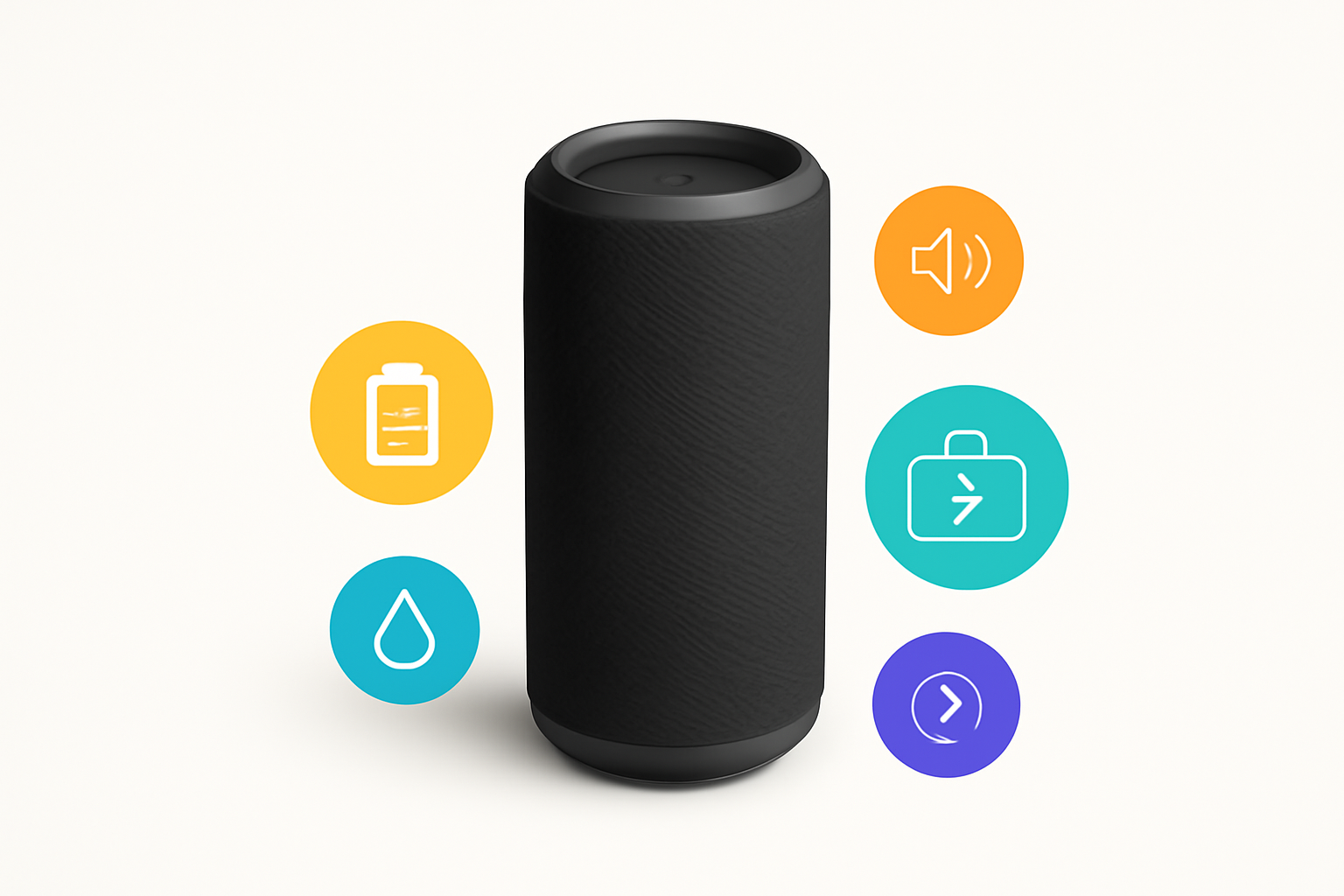
Convenience and Extra Features
Beyond audio and durability, look for handy extras. These convenience features can elevate your experience:
- Charging Your Devices: As mentioned, a USB-A output on the speaker acts as a power bank to charge your phone on the gowhathifi.com.
- Multiple Inputs: Some speakers allow you to play from microSD cards or USB drives, handy if you have a music library on flash storage.
- Voice Prompts: Premium speakers might have voice alerts for battery level, pairing status, etc.
- LED Lights and Design: Stylish LED rings or color-changing lights add flair. (The lantern-speaker above, for instance, glows like a lamp.) While not essential, it’s a fun feature for home parties or camping.
- Control Buttons & Apps: Physical EQ modes or companion apps let you tweak settings easily.
- Speakerphone/Mic: A built-in microphone allows hands-free calls or voice assistant activation directly from the speaker.
These extras don’t impact sound, but they improve usability. For instance, having an aux input ensures you can connect non-Bluetooth devices. And print/scan QR codes (if present) might quickly link you to user manuals or app downloads. When reading specs, watch for lines like “AUX-in”, “carabiner clip”, or “LED flashlight” – they hint at useful bonus features. Always consider your scenario: lights and flashlights help on camping trips, while a sleek design might fit living rooms better.
Smart Features and Integration
Modern Bluetooth speakers increasingly blur the line with smart home devices. Features to consider:
- Voice Assistant Support: Some Bluetooth speakers integrate Alexa, Google Assistant or Siri (via a connected phone). This lets you control playback by voice or ask questions. If hands-free control matters, choose a speaker with a built-in microphone and assistant compatibility.
- App Ecosystem: Brands like JBL, Sony, and Bose offer apps to update firmware, pair multiple speakers, or adjust EQ. This smart integration can keep your speaker up-to-date and unlock new features.
- Wi-Fi/Networking: A few high-end models double as Wi-Fi speakers (like Sonos Move) for lossless streaming and multi-room audio. If you want a speaker that works off the grid and at home, a hybrid Wi-Fi/Bluetooth model might be worth it (though that’s beyond basic Bluetooth features).
- Multi-Room Audio: Some systems let you sync multiple speakers in different rooms. Look for standards like Apple AirPlay or Chromecast support if this interests you.
If you already use voice assistants or smart home tech, prioritize speakers that play nice with them. Otherwise, focus on core Bluetooth features first. Smart extras can be future-proofing, but beware they often raise the price.
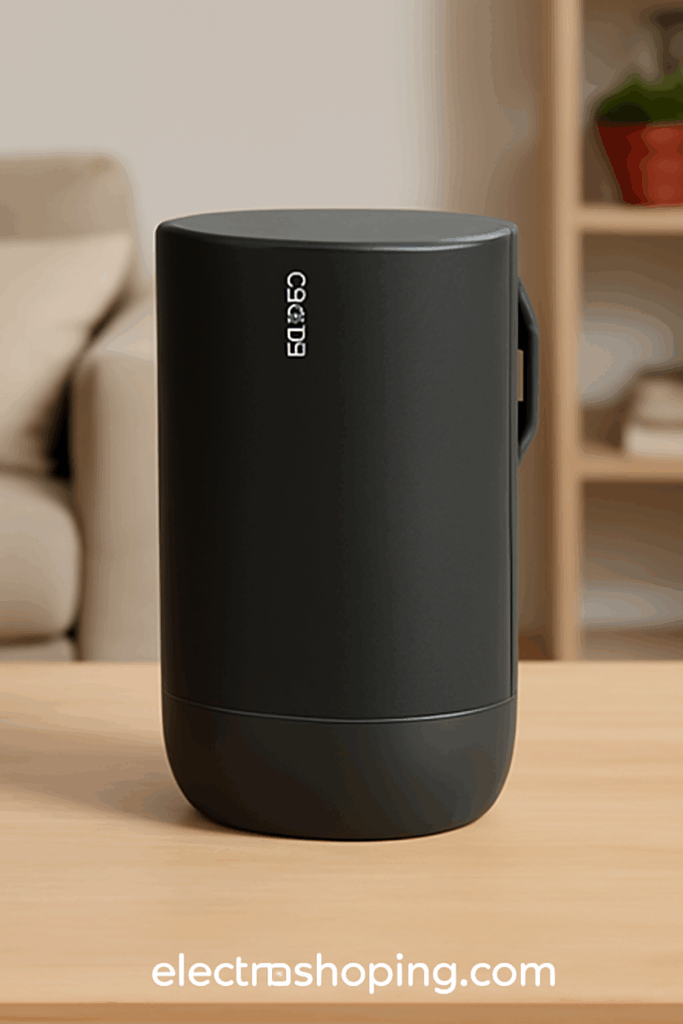
Choosing the Right Bluetooth Speaker Features
Ultimately, match features to your needs. Consider these steps:
- Define Your Use-Case: Will you use it mostly outdoors, by a pool, on a desktop, or in living room? (For outdoors/pool: prioritize waterproofing and durability. Indoors: focus on sound quality and aesthetics.)
- Balance Size vs. Sound: Larger speakers often deliver better bass and volume, but sacrifice portability. If a compact size is critical, expect shorter battery life and slightly lower outputelectrotecaudio.com.
- Check Battery and Charge: Determine minimum battery time you need. If you travel often, a USB-C rechargeable model that charges quickly can be a lifesaver.
- Examine Connectivity: Ensure the speaker has the inputs you need (AUX, USB, etc.). Also check Bluetooth version – going with Bluetooth 5.0 or higher is wise for range and compatibilitywhathifi.com.
- Look at Durability Specs: Read the IP rating and any drop-test claims. If you’re clumsy or outdoorsy, aim for at least IPX6 or IP67.
- Consider Convenience Extras: Decide if you want features like lights, microphone, or charging ports. Are they worth the extra cost?
- Set a Budget: Often, you’ll trade off some features to stay in budget. Focus on what matters most (e.g., sound and battery) and be flexible on less critical perks.
By comparing models this way, you’ll find the one that offers the best combination of features for your lifestyle. For in-depth tips, see our Portable Speaker Buying Guide and Wireless Audio Connectivity Tips. And if sound clarity is your top priority, check our article on Room Acoustics and Speaker Placement.
Share this post with friends who love music, download our quick PDF checklist for future reference, and feel free to leave a comment with your top Bluetooth speaker picks!
FAQ
- Q: Do I need a waterproof Bluetooth speaker?
A: If you plan to use it by a pool, beach, or in the rain, water resistance is a must. An IPX7-rated speaker can survive submersion up to 1mjabra.com. If it’s strictly for indoor use, waterproofing is less important. - Q: How long should the battery life be?
A: At least 10–12 hours is recommended for general usewhathifi.com. If you want it for long outdoor events, look for 20+ hours. Remember battery often drops with volume and features (like lights) on. - Q: What Bluetooth version is best?
A: Go with Bluetooth 5.0 or higher if possible. It offers much longer range (up to 120m) and faster pairing than older versionswhathifi.com. All modern phones support it, ensuring better connectivity. - Q: Is built-in Alexa/Google support worth it?
A: Only if you use voice commands frequently. Otherwise, this is a luxury. Pure audio performance usually matters more for sound quality than adding an assistant. - Q: What’s aptX and should I care?
A: aptX (and especially aptX HD) is a codec that improves wireless audio quality. If your phone supports it, choosing a speaker with aptX can give near-CD quality soundwhathifi.com. Otherwise, standard Bluetooth codecs (SBC/AAC) still work fine for most listeners.
Best Bluetooth Speakers with Extra Features: Waterproof, Bass Boost & NFC Read More–>
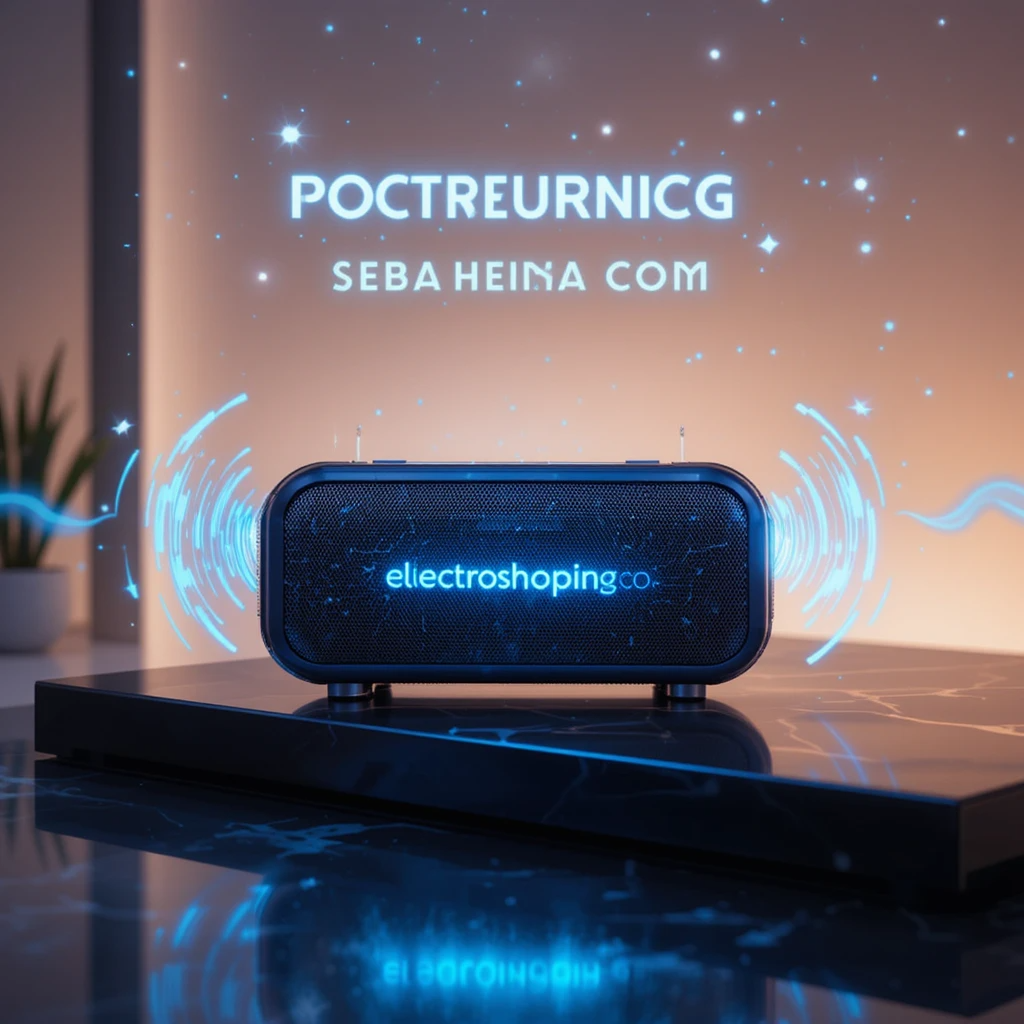
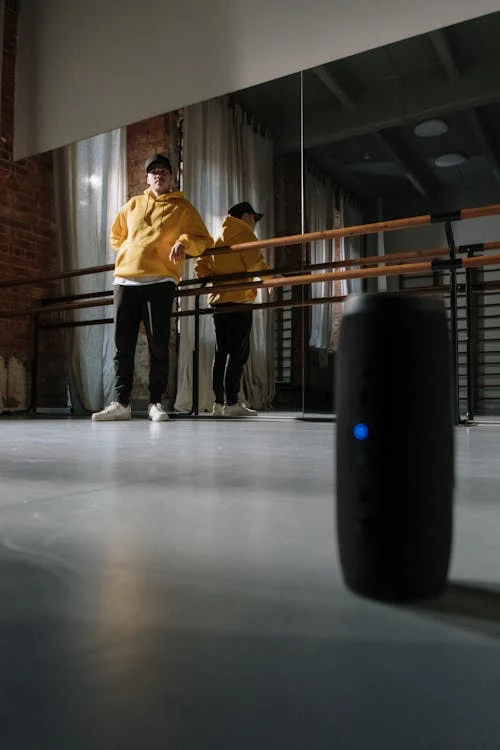
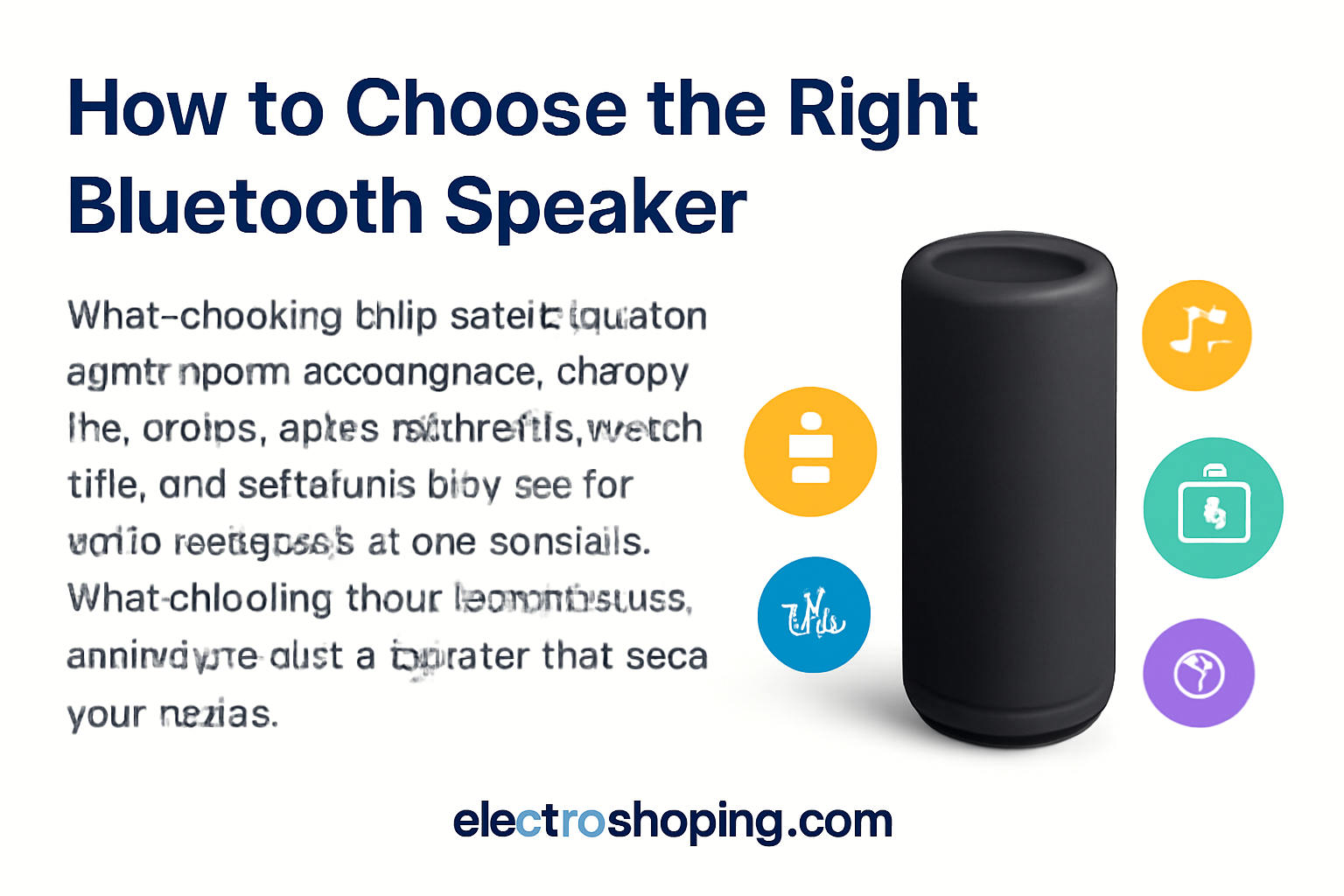

One thought on “Bluetooth Speaker Features: What Extra Features Matter? A Buyer’s Guid”